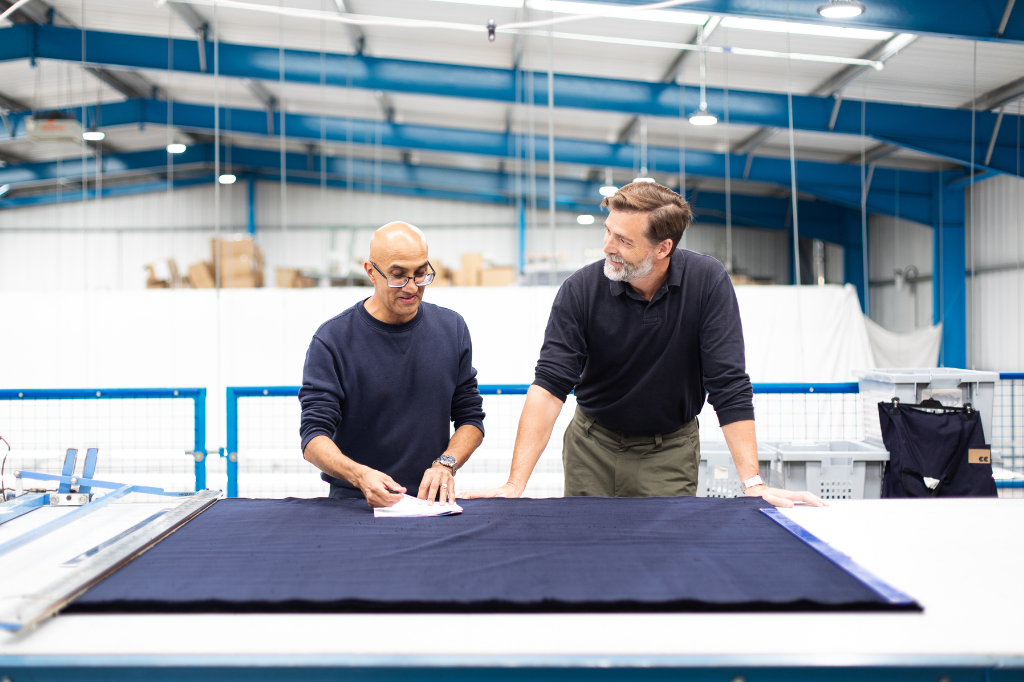Your Cart is Empty
Extra 20% Off Sale
Extra 20% Off Sale
Extra 20% Off Sale
Extra 20% Off Sale
October 10, 2025 5 min read
Earlier this year, Steve and I went along to our local Greenbank Church to hear Patrick Grant speak about his book Less. We left, not only with signed copies in hand, but also inspired by his message of slowing down, buying better, and cherishing the things we already own.
As a fellow Edinburgh local, I couldn’t help but feel a strong connection with Patrick’s stories of growing up surrounded by nature, with stomping grounds like the Hermitage of Braid, a place we ourselves walk in daily with our dog Dexter. Patrick speaks of favourite shops growing up in Edinburgh like the infamous Corniche and hangouts like the City Cafe. These take me back to my late teens in the 1990s when my love of fashion started evolving and I first found these cool hipster hangouts! His passion for timeless design, his appreciation of Scottish-made knitwear, and his commitment to quality over quantity deeply resonate with the values we hold at Meander.
Through ventures like Community Clothing, Patrick has shown that it’s possible to create affordable, beautifully made clothes while supporting jobs and factories here in the UK. From Savile Row tailoring to British manufacturing, from The Great British Sewing Bee to his outspoken stance against fast fashion, Patrick’s career and philosophy continue to challenge the way we think about clothing and consumption. We sat down with him to talk about growing up in Edinburgh, the lessons behind Less, and his vision for the future of fashion.
I'm not sure it shaped my design but it certainly made me determined to live in a way that didn't cause harm to nature.
I learned early on that the things that had the most value to me were the things with the greatest meaning, either because of who made them, or who gave them to me,or perhaps where I bought them myself. The stories behind the things give them their value, not their price.
For something to be useful to us for a long time you need two things to be the case. Firstly it needs to fulfil a genuine need in our lives, form a useful part of the way we go about our daily routine, not just be something bought a whim. It should be something we enjoy using. But beyond that it needs of course to be durable, physically, such that it doesn't break, or perform its function less well over time. So quality in design and functionality, and quality in build or make.
I think both are correct. We are already seeing a shift towards more considered consumption, more second hand, and I don't see us deciding that its not a good idea to be less harmful to people and the planet. We’ll keep moving in this direction, but we need to speed up. There's still a very long way to go.
Making really good knitwear that doesn't just look good on the first wear, but stays looking great wear after wear and wash after wash, requires an extraordinary amount knowledge and skill. Anyone, anywhere, can invest in a knitting machine, but the knitwear makers of Scotland have collectively thousands of years of experience and you can feel it in every product they make. Also, the water in that part of Scotland is perfect for finishing knitwear. You can try and replicate the feel using chemistry, but its simply not as good.
The biggest challenge is an almost complete disappearance of brands willing to pay for quality make. With just a tiny number of exceptions, the best known British brands make almost nothing here any more.
I'd like it to be the first choice for every days clothes for everyone in the UK, if we did that we’d create tens of thousands of jobs, and everyone would have better clobber.
As a species we love to make things, we used to make tools, clothes, houses, cookware, everything we used. Working with our hands just makes us feel good, and yet as time goes by fewer and fewer of us have jobs that involve making. We want it in our lives.
I love fashion, but it needs to be fashion that has alure, is well crafted, designed with care, not just garbage churned out by Ai and produced for nothing out of the worst materials on the planet. We need to take it in moderation, a little fashion, just as we treat the other luxuries in our life.
I just want to make Community Clothing work, and maximise the positive impact it can and should have. That’ll do me.
A huge thank you to Patrick for taking the time to chat to us about all things fashion and sustainability. I highly recommend his book Less and you can find out more about Patrick and Community Clothing here @patrickgrantism, @community_clothing
Comments will be approved before showing up.
